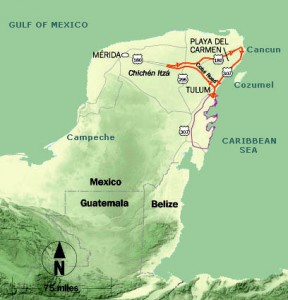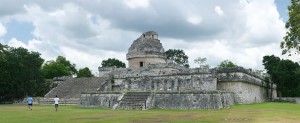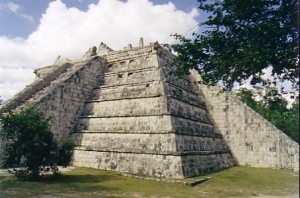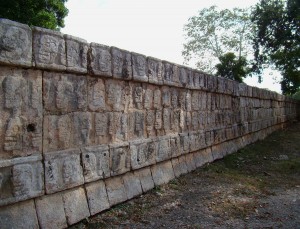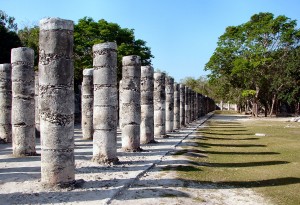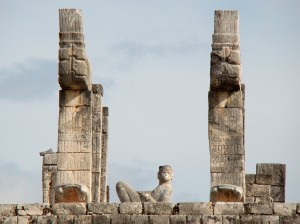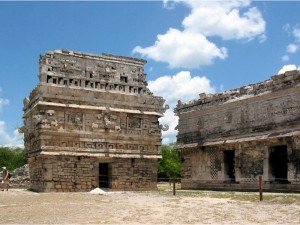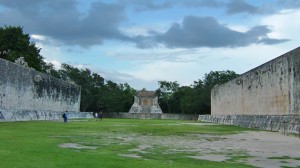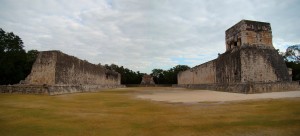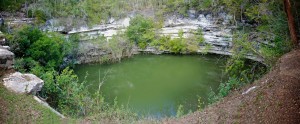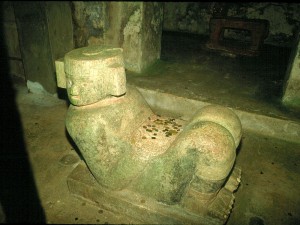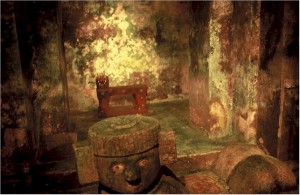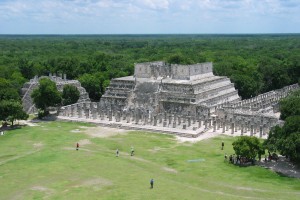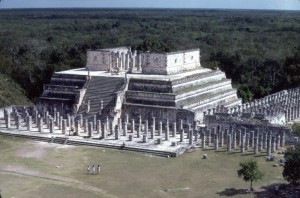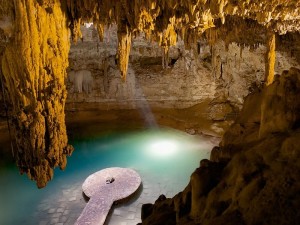Written by Soudip
August 23rd 2014Other Places
You Are Here
Home > Mexico > Monuments of Tlacotalpan Historical Facts and PicturesChichen Itza Historical Facts and Pictures
Built by the Post Classic Maya people, the large pre-Mexican city, Chichen Itza is located in Tinum, one of the municipalities of Yukatan. This archaeological site was one of the great mythical cities and hosted the most diverse population of the Maya world.
Chichen Itza Map
The layout of the core of this site was developed between 700 AD and 900 AD. The city grew as a regional capital in the 10th century, controlling an area from northeast to the central Yakutan.
Architecture and Structure
Considered one of the Seven Wonders of the World this historical site is a manifestation of sublime architectural work, showcasing Chenes and Puuc styles. The buildings within the complex are lined in a sequence of architectonic sets, each separated by a succession of low walls from the other. The structure is divided between three major complexes, The Great North Platform, the Osario Group and the Central Group. The Great North Platform is occupied with the Temple of Warriors, the El Castillo monuments and the Great Ball court. The Osario Group includes a pyramid and the Temple of Xtoloc. The Central Group comprises the classic terminal buildings, Le Monjas, built according to Puuc architectural structure, the El Caracol, a round shaped building standing on vast square platform, and the building named Akab Dzib that means “Dark Writing”.
Interiors of the Great Ball Court
The interior section of Chichen Itza displays excellent craft-work and the most remarkable specimens of this splendid art can be found inside the Great Ball Court. Measuring 551 by 230 ft. the Great Ball Court is considered as the best preserved and largest ball court in Mesoamerica, contains high interior walls with slanted benches decorated with sculpted panels placed at its base and sweat baths.
The Serpent Design
During the autumn and spring equinoxes the northwest corner of the El Castilo pyramid, also known as the Pyramid of Kukulkan, casts a succession of triangular shadows next to the western balustrade, creating the appearance of a giant snake crawling down the staircase, which according to some scholars is a depiction of the feathered-serpent deity Kukulkan. This serpent effect is displayed with artificial lighting during the night.
Category
MexicoWritten by Soudip
August 23rd 2014










